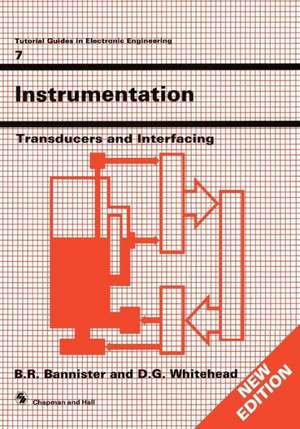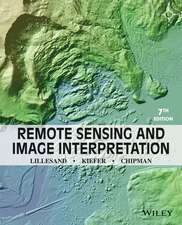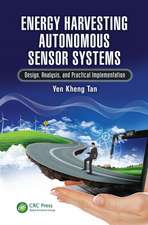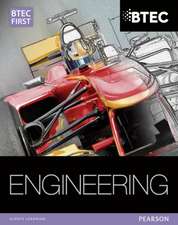Instrumentation: Transducers and Interfacing: Tutorial Guides in Electronic Engineering, cartea 7
Editat de B.R. Bannisteren Limba Engleză Paperback – 11 oct 1990
Preț: 383.33 lei
Nou
Puncte Express: 575
Preț estimativ în valută:
73.35€ • 76.43$ • 60.73£
73.35€ • 76.43$ • 60.73£
Carte tipărită la comandă
Livrare economică 03-17 aprilie
Preluare comenzi: 021 569.72.76
Specificații
ISBN-13: 9780412342400
ISBN-10: 0412342405
Pagini: 154
Ilustrații: X, 154 p.
Dimensiuni: 178 x 254 x 9 mm
Greutate: 0.3 kg
Ediția:1991
Editura: SPRINGER NETHERLANDS
Colecția Springer
Seria Tutorial Guides in Electronic Engineering
Locul publicării:Dordrecht, Netherlands
ISBN-10: 0412342405
Pagini: 154
Ilustrații: X, 154 p.
Dimensiuni: 178 x 254 x 9 mm
Greutate: 0.3 kg
Ediția:1991
Editura: SPRINGER NETHERLANDS
Colecția Springer
Seria Tutorial Guides in Electronic Engineering
Locul publicării:Dordrecht, Netherlands
Public țintă
ResearchCuprins
1 Principles of transduction.- Underlying physical principles of transducers.- Silicon technology.- Summary.- Review questions.- Further reading.- Problems.- 2 Sensors, actuators and displays.- Mechanical sensing.- The synchro.- Temperature sensing.- Radiation detection transducers.- Optical sensors.- Sonic transducers.- Nuclear radiation detectors.- Chemical activity.- Actuators, stepper motors and displays.- Summary.- Review questions.- Further reading.- Problems.- 3 Analogue processing of signals.- The ideal operational amplifier.- The practical operational amplifier.- Chopper stabilization.- Modulation.- The analogue multiplexer or scanner.- Summary.- Review questions.- Further reading.- Problems.- 4 Signal convertion.- The digital-to-analogue converter.- The analogue-to-digital converter.- Sample-and-hold circuits.- Voltage-to-frequency conversion.- Synchro-to-digital conversion.- The phase lock loop.- Summary.- Review questions.- Further reading.- Problems.- 5 Digital processing of signals.- Filtering in the digital domain.- Sampling.- Quantization.- Signal averaging.- Linerarization of sensor response.- Digital processing circuits.- The digital signal processor.- Summary.- Review questions.- Further reading.- 6 Interfacing.- Digital circuitry.- Specialized interfacing chips.- Transfers of data over greater distances.- Interfacing standards.- Summary.- Review questions.- Further reading.- Appendix A.- Solutions to problems.

















